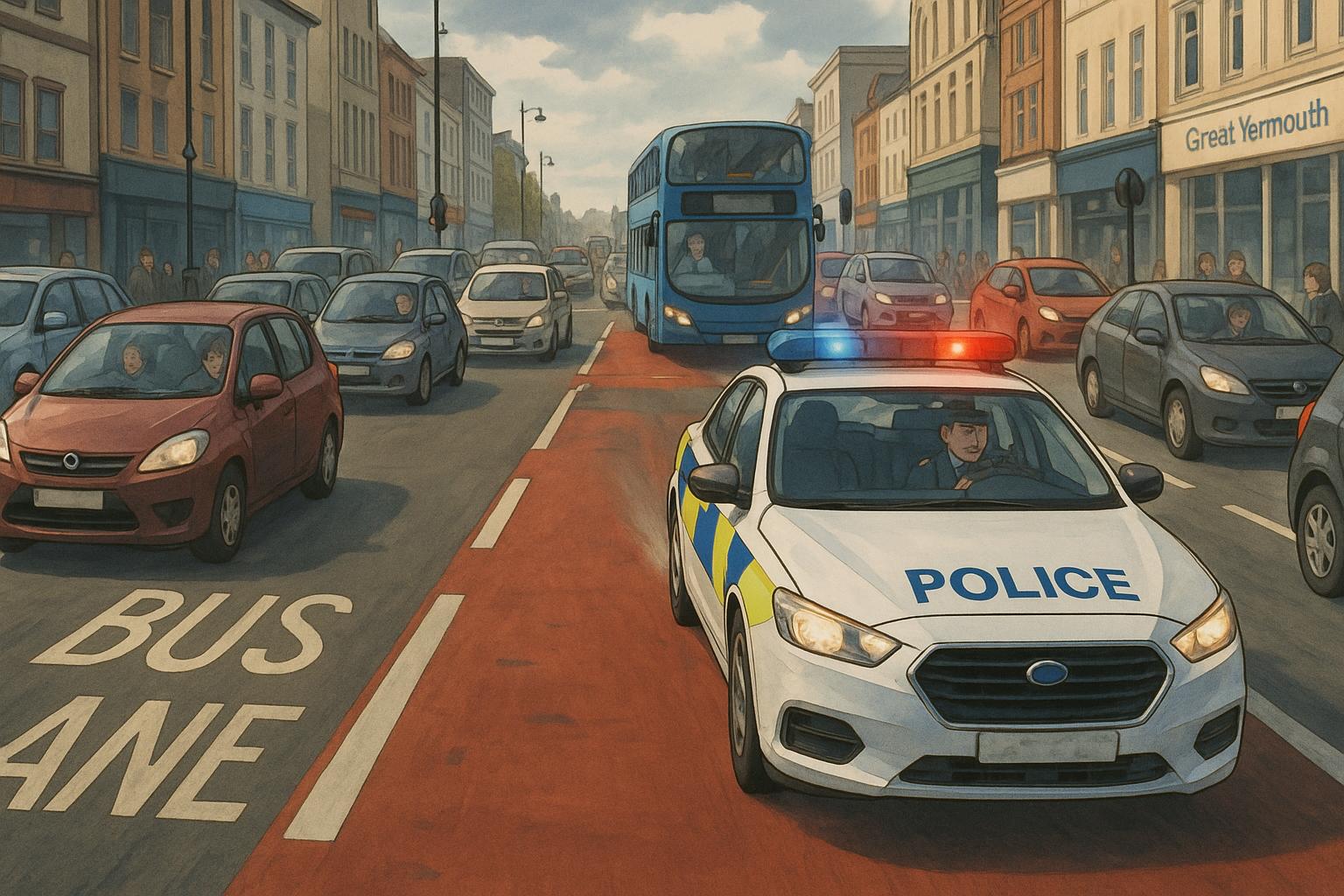In a recent incident in Great Yarmouth, a video captured a police car driving in the wrong direction down a bus lane, causing a stir among local residents. Taken on May 19, the same day a new traffic flow system was introduced, the footage shows the police vehicle navigating Regent Road, which had just undergone significant changes in traffic management. This change led to a number of drivers inadvertently travelling the wrong way, raising questions about the clarity of road signage and communication during the transition.
Observed moving from the pedestrian crossover at Market Gates, the police car drove up the newly allocated bus lane towards a retail outlet, Poundstretcher. Under usual circumstances, bus lanes are designated for the use of buses, taxis, and emergency vehicles, which highlights why police vehicles can typically use such lanes. However, in this case, the police car did not appear to be engaged in an emergency response, as there were no flashing lights or sirens activated, prompting discussions about the appropriateness of its actions.
The situation echoes previous incidents where police officers were scrutinised for driving against traffic regulations. Notably, a Police Ombudsman investigation affirmed that a police officer was justified in a similar situation when responding to an emergency, where the use of blue lights allowed them to navigate against the flow of traffic swiftly and safely. The officer's decision was deemed reasonable given the circumstances, reinforcing that timely responses to emergencies are sometimes paramount, even when they involve bending the rules of the road.
In contrast, another case highlighted the rigidity of enforcement in bus lane regulations. A man faced a £195 fine after briefly entering a bus lane to allow an emergency police van to pass, illustrating the strict adherence to traffic laws regardless of the context. Local councils frequently enforce these regulations to maintain order and safety, resulting in a delicate balance between supporting emergency services and adhering to set traffic laws.
The UK government's guidelines on traffic management stress the necessity for local authorities to ensure clear signage and communication regarding bus lane restrictions. When motorists are unaware of the current rules, as seen during the recent changes in Great Yarmouth, confusion is likely to arise, leading to potential infractions. The Highway Code further substantiates that drivers must remain vigilant of the operational hours for bus lanes, as entering them without permission can result in fines ranging from £60 to £130, depending on the locality.
Ultimately, the incident in Great Yarmouth underscores the broader challenges of enforcing traffic regulations while ensuring that emergency services can operate effectively. As road systems evolve and change, both drivers and authorities must navigate the complexities of compliance and emergency responsiveness, striving for clarity to prevent confusion and ensure community safety.
Reference Map:
- Paragraph 1 – [1], [5]
- Paragraph 2 – [1], [4]
- Paragraph 3 – [2], [3]
- Paragraph 4 – [6], [7]
- Paragraph 5 – [4], [5]
Source: Noah Wire Services
